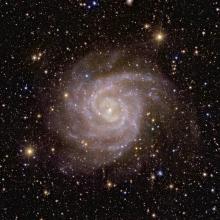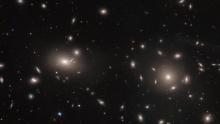Listen to today's episode of StarDate on the web the same day it airs in high-quality streaming audio without any extra ads or announcements. Choose a $8 one-month pass, or listen every day for a year for just $30.
You are here
Local Supercluster
The structure of the universe is like a Russian matryoshka doll — each bit is nested inside a larger one. In our case, for example, Earth is a member of the solar system, which in turn is a member of the Milky Way galaxy, which is a member of a family of galaxies known as the Local Group.
And the nesting doesn’t end there. The Local Group is a member of a much larger collection of galaxies known as the Local Supercluster. It spans more than a hundred million light-years, and contains tens of thousands of galaxies.
The supercluster was discovered and named more than half a century ago, by Gerard de Vaucouleurs. It’s centered roughly on the Virgo Cluster, which contains a couple of thousand galaxies.
Most of the supercluster’s galaxies appear to form a flat disk, with a few in a wide halo around the disk.
The mass of all these galaxies is equal to a million billion Suns. But most of that mass is invisible. Instead of glowing stars and gas clouds, it consists of dark matter — material that produces no detectable energy, but that exerts a gravitational pull on the visible matter around it. It may consist of subatomic particles, although physicists have had a hard time finding them.
The nested dolls may not end with the Local Supercluster, though. A study a couple of years ago found that it may be part of an even bigger supercluster — one that spans half a billion light-years — one more layer in the structure of the universe.
Script by Damond Benningfield






